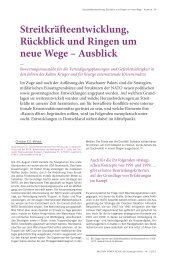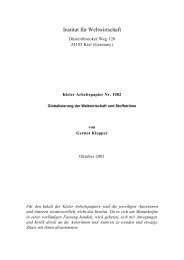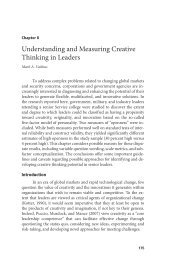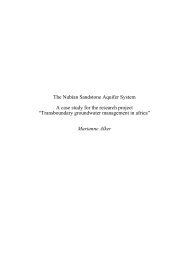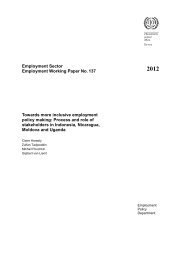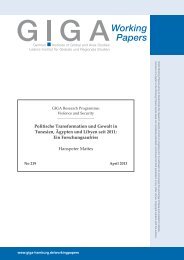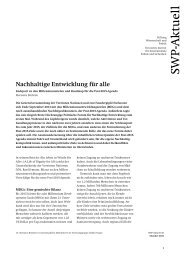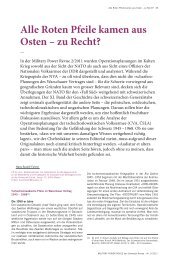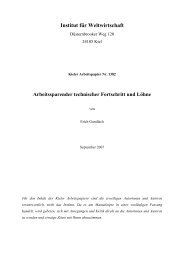Authoritarian Rule and Democracy in Africa: A Theoretical Discourse
Authoritarian Rule and Democracy in Africa: A Theoretical Discourse
Authoritarian Rule and Democracy in Africa: A Theoretical Discourse
Create successful ePaper yourself
Turn your PDF publications into a flip-book with our unique Google optimized e-Paper software.
uild<strong>in</strong>g <strong>and</strong> economic development. In the context of <strong>Africa</strong>’s chang<strong>in</strong>g societies, democracywas seen as a source of political <strong>in</strong>stability (Hunt<strong>in</strong>gton, 1968; Mamdani, Mk<strong>and</strong>awire <strong>and</strong>Wamba-dia-Wamba, 1988; Anyang' Nyong'o, 1988b).Several ideologies, rang<strong>in</strong>g from <strong>Africa</strong>n socialism <strong>and</strong> humanism to negritude <strong>and</strong>authenticity, were propagated by the new rulers to control dissent <strong>and</strong> project <strong>Africa</strong>nsocieties as homogeneous. The democratic impulse of the decolonization period had taughtthe emergent social groups the power of collective action <strong>in</strong> the politics of resource allocation.The logical growth of civil society that the expansion of unions, professional associations <strong>and</strong><strong>in</strong>terest group organizations created was seen by the dom<strong>in</strong>ant groups <strong>and</strong> state authorities asa threat to economic development <strong>and</strong> private accumulation.Various strategies were employed to regulate the activities of the social groups. One-partyrégimes with “socialist orientations” simply co-opted some of the popular organizations <strong>in</strong>tothe party structures <strong>and</strong> floated alternative organizations at various levels of society to checkthe development of new autonomous organizations. Such practices were common <strong>in</strong> Ben<strong>in</strong>,the Congo, Ghana under Nkrumah, Gu<strong>in</strong>ea under Sekou Toure, <strong>and</strong> Tanzania. Other lessideological one-party states imposed restrictions on the activities of unions <strong>and</strong> associations,co-opted the leadership of popular organizations <strong>in</strong>to policy-mak<strong>in</strong>g <strong>in</strong>stitutions, <strong>and</strong>strengthened patron-client relations with traditional authority. Cameroon, Côte d’Ivoire,Kenya, Malawi, Senegal (before the democratic reforms) <strong>and</strong> Sierra Leone fall under thiscategory. Military régimes such as those of Mali, Niger, Nigeria, Togo <strong>and</strong> Zaire tended tofollow the practices of the latter, although some, like Nigeria, were relatively less successful<strong>in</strong> controll<strong>in</strong>g dissent <strong>and</strong> co-opt<strong>in</strong>g popular organizations. The relative openness of politicallife that flourished under decolonization was severely curtailed <strong>in</strong> most countries.<strong>Authoritarian</strong>ism did not however destroy the social contract that underp<strong>in</strong>ned the nationaliststruggles. Indeed, the legitimacy of authoritarian rule rested on the ability <strong>and</strong> will<strong>in</strong>gness ofthe political authorities to promote public welfare. Such an ability depended on thesusta<strong>in</strong>ability of economic growth. The social contract that provided such legitimacy wasunabashedly top-down. Popular struggles aga<strong>in</strong>st these repressive arrangements were <strong>in</strong>itiated<strong>and</strong> susta<strong>in</strong>ed <strong>in</strong> a number of countries (Anyang' Nyong'o, 1988a), but the balance wasunmistakably <strong>in</strong> favour of generalized authoritarian rule.2.3 Economic crisis <strong>and</strong> pressures for re-democratizationThe authoritarian model based its legitimacy on cont<strong>in</strong>ued accumulation, positive rates ofgrowth <strong>and</strong> the provision of public welfare. But <strong>Africa</strong>n societies entered a stage of profoundcrisis <strong>in</strong> the late 1970s/early 1980s as a result of the recession <strong>in</strong> the world market <strong>and</strong> thestructural problems of the state capitalist model of development. Where as only 10 out of 34sub-Saharan <strong>Africa</strong>n countries experienced negative per capita GDP growth rates between1965 <strong>and</strong> 1980, only n<strong>in</strong>e registered any per capita GDP growth rate between 1980 <strong>and</strong> 1987(Helle<strong>in</strong>er, 1990; World Bank, 1989). Average GDP growth rates for all SSA countries fellfrom 6.1 per cent <strong>in</strong> 1965-73 to -1.3 per cent <strong>in</strong> 1987. Agriculture, <strong>in</strong>dustry <strong>and</strong> servicesregistered marked decl<strong>in</strong>es <strong>in</strong> rates of growth, with <strong>in</strong>dustry fall<strong>in</strong>g from 13.5 per cent <strong>in</strong>1965-73 to -1.2 per cent <strong>in</strong> 1980-87. The same poor record is demonstrated <strong>in</strong> export volume<strong>and</strong> terms of trade. The total debt of SSA countries jumped from US $21.1 billion <strong>in</strong> 1976 toUS $137.8 billion <strong>in</strong> 1987. The ratio of external debt to GDP <strong>in</strong>creased from 45.2 per cent <strong>in</strong>1981 to 66.1 per cent <strong>in</strong> 1986 (IMF, 1988; Taylor, 1989). Table 3 highlights some of thenegative trends <strong>in</strong> economic performance.17





